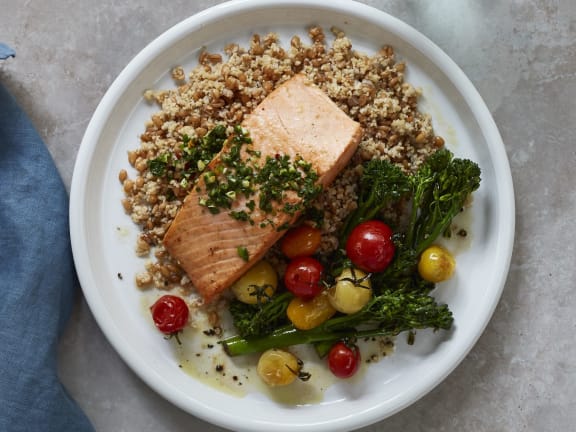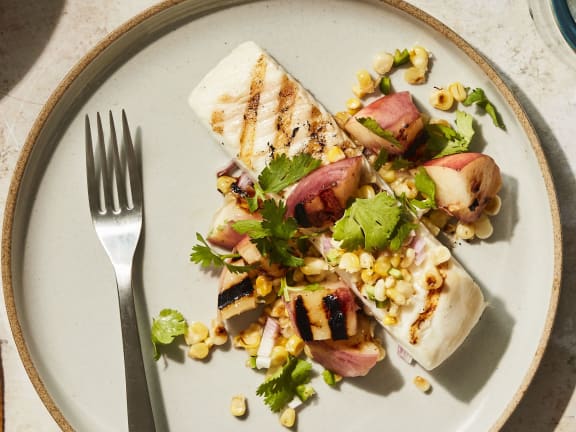One of the best ways to know if you’re choosing the most sustainable fish is to learn its place of origin. Some of the most sustainable fish to eat comes from Alaska. That’s because the Alaskan fishing industry is one of the most sustainable fishing industries on the planet.
Knowing if your fish is from Alaska makes it easy to know if it’s a sustainable choice. If it’s from Alaska, it’s always something you can feel good about.
What is sustainable fishing?
Sustainable fishing prevents overfishing of marine species and limits the impact that harvest practices can have on the habitat. Government agencies play an important role in fish sustainability, working with scientists and local communities to help set regulations around harvests.
In Alaska, unsustainable fishing is illegal. Sustainable use of resources is explicitly written into the state constitution, so the fishing industry must harvest seafood in a sustainable way. It’s the only state in the U.S. that has this level of commitment to responsible fishing.
Sustainable Fishing in Alaska
Here are some ways that the state of Alaska ensures sustainable fishing:
Harvest Quotas
Strict harvest quotas are set each year to ensure that enough salmon can return home to spawn the next generation of fish.
Fishery Closures
If population numbers are ever too low for any reason (warming waters, changes in migration patterns), the state can close down a fishery until the population has a chance to recover.
Gear Restrictions
Gear restrictions in Alaska also limit how salmon are harvested. These restrictions are designed to eliminate the impact that fishing has on fragile habitats and other species of mammals, birds, and marine life.
What is overfishing?
Overfishing can happen when the industry harvests more fish than a fishery can sustainably support. When the industry harvests too many fish in a season, this can prevent the population from replenishing itself to a healthy, abundant level. A sustainable fishery must have time and resources to reproduce each season. Factors like climate change and habitat loss can also contribute to overfishing and harm fish sustainability.
Overfishing is a problem because it puts a population of fish at risk of endangerment. Industries that take part in overfishing may also use practices that harm marine habitats and ensnare bycatch.
There are currently no overfished species of fish in Alaska.
5 Most Sustainable Fish to Eat
Any species of fish that comes from Alaska is a good, sustainable option. Here are 5 types of fish to look for when you’re shopping for sustainable seafood.
Sockeye Salmon

In 2022, scientists counted the largest run of sockeye to Bristol Bay in recorded history. Nearly 80 million returned to their natal streams. Bristol Bay, located in Southwest Alaska, is home to the world's largest sockeye spawning ground.
A defining characteristic of sockeye salmon is the bold red color of its fillets. This color comes from a diet rich in plankton and krill. This diet also gives sockeye its robust taste.
Rockfish

Rockfish are vulnerable to overfishing, but in Alaska this group of fish is healthy and abundant.
Rockfish is a flavorful species of white fish that pairs well with bold flavors. Rockfish fillets have a thin profile, so the fish cooks quickly.
Coho Salmon

Outside of Alaska, some fish farms raise coho salmon, so be sure to look for wild-caught coho from Alaska. It’s the most sustainable choice, as open-net pen fish farming has negative effects on the surrounding environments.
Coho salmon has a subtler flavor than sockeye salmon, which is great for flavorful dishes. It’s also leaner than sockeye, so it has a more delicate texture.
Pacific Cod

Fisheries on the East Coast of North America have overfished Atlantic cod. Populations are recovering, but this species is a complicated one to shop for. In contrast, Pacific cod from Alaska is always a sustainable choice.
Pacific cod from Alaska is lean and mild. It has a higher moisture content than Atlantic cod. This gives it a robust texture that’s ideal for baking, steaming, or frying.
Pacific Halibut

On the East Coast, fisheries have overfished Atlantic halibut. Like Atlantic cod, Atlantic halibut populations are recovering. In contrast, Pacific halibut from Alaska is abundant and always sustainable. In fact, Homer, AK, is the Halibut Fishing Capital of the World.
Pacific halibut from Alaska has a meaty texture and mild flavor. These qualities make it a coveted species of white fish. Its firm fillets can be cooked using a diverse variety of cooking methods.
How to Stop Overfishing
Fisherpeople don’t have to stop harvesting fish to prevent overfishing. In fact, healthy fisheries can support abundant harvests for generations. Sustainable fishing practices can effectively prevent overfishing.
Sustainable fishing practices can also help overfished populations recover. Government agencies can reduce fishing quotas. They can also close fisheries until populations rebound to healthy levels.
Consumers can help stop overfishing by only buying seafood harvested from sustainable fisheries. Buying fish from Alaska is an easy way to enjoy seafood that you can feel good about.





